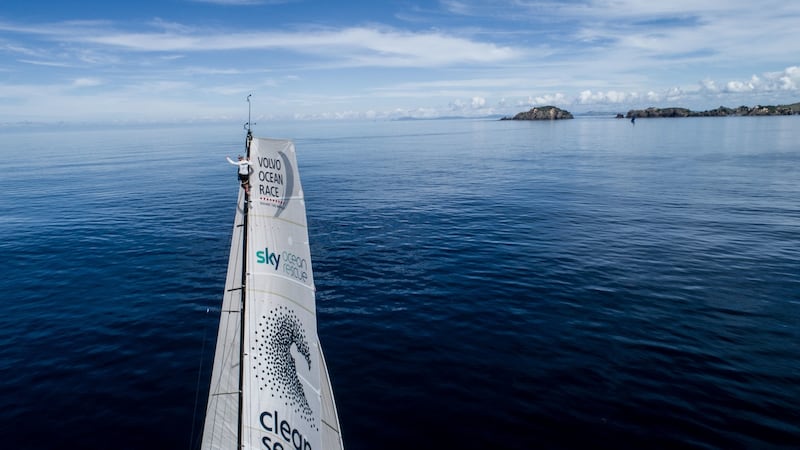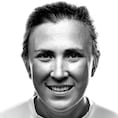We are gutted. Having worked incredibly hard over the last three weeks since starting the sixth leg of the Volvo Ocean Race from Hong Kong, our efforts were shredded just 40 nautical miles from the Auckland finishing line.
For most of this 6,000 nautical-mile leg we have been in contention, either in the lead or in the top three.
We really, really wanted a podium result to give a much-needed morale boost to our young team on Turn the Tide on Plastic and it looked like it was going to happen as we raced down the eastern side of New Zealand’s North Island.
A week ago, we had been leading the race and held first overall for two days with the Dutch team Brunel.
The overall race leaders Mapfre were covering their nearest rivals on Dongfeng some 200 miles astern of us, while Scallywag and AkzoNobel weren’t too far away from us at the front and eventually slipped ahead by a couple miles only.
Brunel ended up sailing too far south and ran into very light winds so as we reached Cape Reinga at the top of New Zealand over the weekend it looked like a three-way battle for podium places between ourselves, Scallywag and AkzoNobel.
Even at 120 miles from the finishing line, we were briefly in the lead again before the other pair pulled out to about five miles ahead.
But we were almost certain to take at least third and despite the gruelling work rate on board, we were completely happy that we were sailing fast and very competitive.
Fresher winds
A light wind patch off Cape Brett saw the leading boats slow but, incredibly, Mapfre and Dongfeng were being swept up to us by the fresher winds further north.
At just 40 miles to the finish, the wind strengthened once again and while we were still holding third place, we saw the two chasing overall leaders gain ground rapidly on us.
We reefed our mainsail for the conditions and yet they were still sailing at 20 knots compared to our 18 knots. Something was amiss.
It was only as they cruised past us that we could see that they hadn’t reefed their mainsails but had instead switched to smaller headsails and this gave them a speed advantage.
By then it was too late for us to match their sail configurations and within minutes had slipped from third place to fifth.
There is always disappointment in sport but, after 6,000 miles and three weeks at sea, it is a bitter pill for us to swallow.
For sure, I’ve had disappointment before and this doesn’t compare to my London 2012 fourth place. But that was an event that I spent eight years dedicated towards; this race only appeared on my horizon last summer.
But we are now a very close-knit team with lifelong friendships formed and we are feeling considerable pain at how close we came to delivering on our goal of getting on the podium.

We thought, this is our time, this is our moment. But it wasn’t.
We have a team debrief planned for today (Wednesday) and, despite the result, we have a lot of positives to take away.
First, we demonstrated how we are now competitive.
Playing catch-up
This is vital because we are the only team with half the crew under 30 and an even male/female mix in the race. We were also a last-minute campaign so playing catch-up with much better-funded teams with deeper crew experience and knowledge of these Volvo 65-footers.
That knowledge gap has narrowed hugely and while Mapfre’s third place into Auckland extends their overall lead of the race slightly from Dongfeng, Scallywag now moves into third place overall.
Just two legs ago, Scallywag and ourselves were glued together at the back of the fleet and bottom of the table. Although we’re still bottom of the table, the lesson is clear: if they can do it, so can we!
Other areas of improvement?
We are a lot more comfortable with getting the sail trim right and we have great speed in light winds, which considering we are the heaviest boat with one or two more people than the other boats is good to know.
We talked a lot about what we will do once in Auckland; it mainly revolved around fresh food and exploring the North Island
Everyone is working well as a team and the combination of our two navigators Nico and Brian works really well. It means we are always going in the right mode and in the right direction. We have put our faith in our navigators and it paid off (some of the other boats bailed out of our routing when it looked like they might have a quick gain somewhere else, but in the long run our consistency overall in the leg was working out for us).
For me personally, I have enjoyed this leg much more than previous ones, apart from the finish. Of course, at times it has been very tough, particularly the first week where we were continuously soaking wet and tired.
However, this last week has been a pleasure to sail – great wind, not wet on deck, a little bit cooler down below so sleeping bags are in use again. The mood was good, everyone excited about the finish, particularly Bianca who was beyond excited to get to her hometown of Auckland.
Leftovers bag
But I think we were all ready for some time off the boat, especially because, as I packed the day 20 food bag, I realised that on our last 24 hours we would be down to the leftovers bag, ie the least favourite freeze-dried meals (none of which I like at all anymore).
We talked a lot about what we will do once in Auckland; it mainly revolved around fresh food and exploring the North Island.
I really enjoy my watches and I have taken on a lot more roles on the boat than before – on the bow helping with sail drops, setting up our outriggers (spinnaker poles, sort of), running sheets and trimming all of our sails.
I lost a bit of confidence steering the boat at the start of the leg as it was so dark at night you could see nothing, so focusing purely on a small number on the mast display instead of sailing to the feel of the boat. I found it very tough and exhausting.
This last week we have had much brighter nights with clear skies and the moon slowly coming back, so I’m now really comfortable steering again which is a really good feeling.
I am really glad I stuck with this race as I have had a completely different experience compared to before.
And while I am a standby crew member for the seventh leg across the Southern Ocean to Brazil next month, the truth is I’m also really looking forward to a holiday in New Zealand – if I’m not called up.















